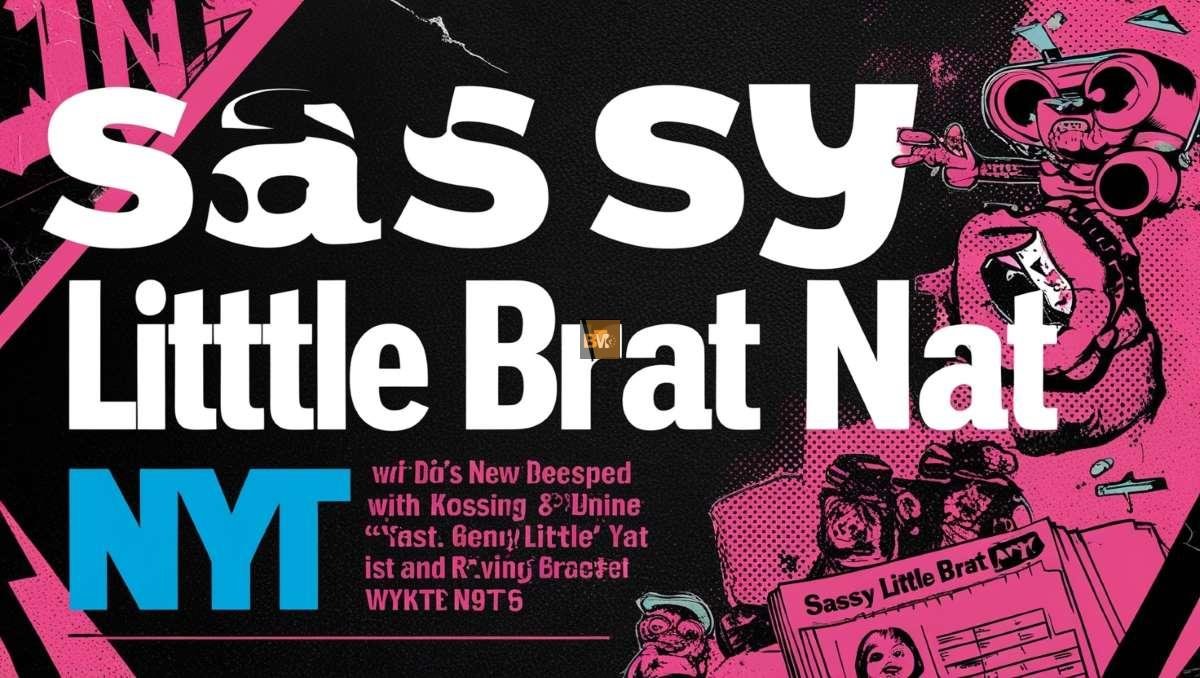Sassy Little Brat NYT

Introduction
The phrase “Sassy Little Brat NYT” has sparked curiosity, discussion, and even controversy in various circles. Whether it references a character, a cultural trope, or a broader societal theme, the phrase carries connotations of attitude, rebellion, and youthful defiance. From literature to pop culture, the idea of a “sassy little brat” has been used to depict confident, outspoken individuals who challenge authority and express themselves unapologetically. In this article, we will explore the origins, interpretations, and significance of this phrase, analyzing how it resonates in different contexts.
1. The Evolution of the “Sassy Little Brat” Archetype
The image of a “sassy little brat” has existed for generations, often seen in literature, movies, and television. Characters who embody this persona are typically witty, mischievous, and unwilling to conform to societal expectations. From classic novels featuring headstrong young protagonists to modern media with rebellious teenage leads, the archetype has evolved over time. In the early 20th century, authors used such characters to challenge traditional gender roles, portraying young girls who refused to be silenced. In contemporary settings, the trope has taken on new dimensions, often representing a form of empowerment and resistance against oppressive norms.
2. Cultural Impact and Representation in Media
Popular media has embraced the “sassy little brat” persona, with numerous films and television shows highlighting such characters. From animated series featuring sharp-tongued heroines to comedic sitcoms where young actors steal the show with their witty remarks, the appeal of this archetype is undeniable. These characters often serve as a voice for the audience, saying what others might be too afraid to express. However, the portrayal of sassiness is not always positive. In some cases, it can reinforce negative stereotypes, portraying confidence as arrogance or defiance as mere troublemaking. The way these characters are written and perceived can influence societal attitudes toward assertiveness, especially in young people.
3. Psychological and Social Perspectives
From a psychological standpoint, the “sassy little brat” phenomenon can be linked to childhood development and personality formation. Children who display sassiness often possess strong communication skills, high levels of emotional intelligence, and a desire for independence. While this behavior can sometimes be challenging for parents and educators, it is also a sign of creativity and confidence. Socially, such behavior can be viewed differently depending on cultural norms—what is seen as assertiveness in one society might be considered disrespect in another. Understanding these nuances is crucial in evaluating whether the “sassy little brat” label is empowering or problematic.
4. Controversies and Misinterpretations
The phrase “sassy little brat” is not without its controversies. Some argue that it unfairly diminishes outspoken individuals, particularly young girls, by framing confidence and self-expression as negative traits. Others believe that the term is used endearingly, emphasizing charm and playful defiance rather than outright disrespect. The interpretation of this phrase often depends on the context in which it is used. When embraced positively, it can highlight a strong-willed personality; when used negatively, it can serve as a means to silence or control. The fine line between empowerment and insult is worth exploring in discussions about gender, authority, and societal expectations.
5. The Role of “Sassy Little Brat” in Modern Conversations
In today’s world, discussions around confidence, assertiveness, and attitude have taken center stage, especially in conversations about gender equality and personal expression. The “sassy little brat” label can be seen as both a badge of honor and a tool of criticism, depending on how it is framed. Social media has given rise to a new wave of confident, outspoken personalities who challenge norms, often reclaiming terms that were once used against them. Whether in entertainment, everyday interactions, or online discourse, the idea of sassiness continues to shape dialogues about individuality and strength.
Conclusion
The phrase “Sassy Little Brat NYT” carries various meanings, interpretations, and implications. While it often describes confident, outspoken individuals, its connotation can shift based on context. Throughout history, the “sassy little brat” archetype has evolved, challenging stereotypes and encouraging conversations about self-expression. Whether viewed as an endearing trait or a problematic label, it remains a significant part of cultural and societal discussions. Understanding its impact helps us appreciate the nuances of personality, empowerment, and perception in a rapidly changing world.



